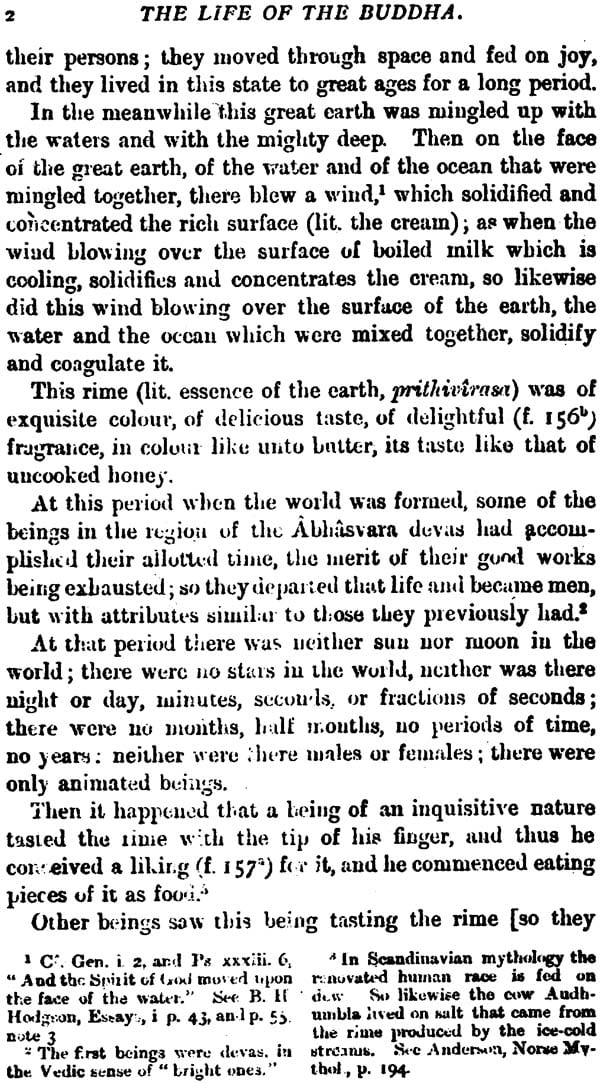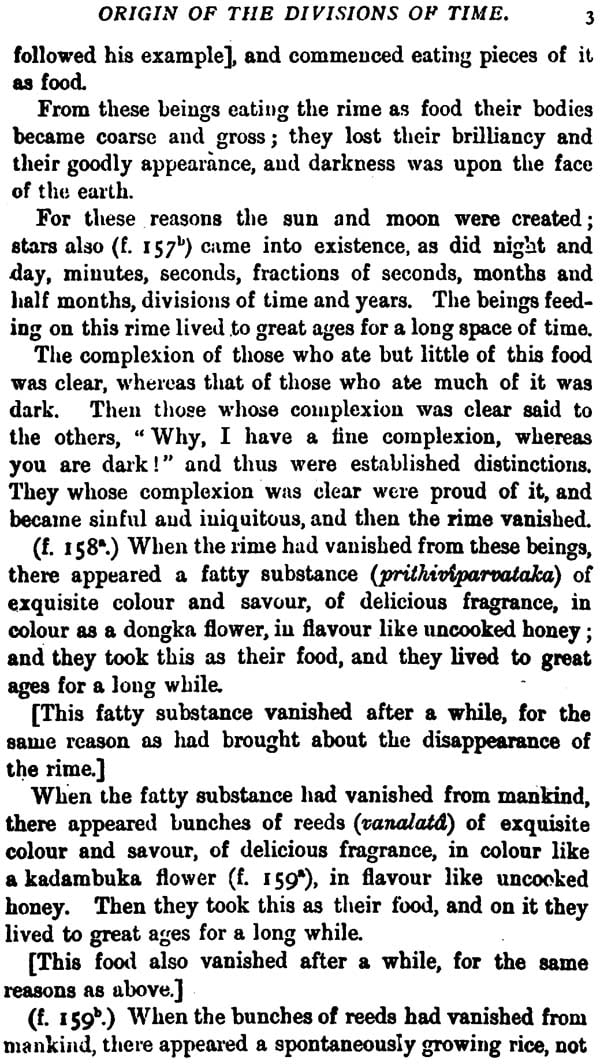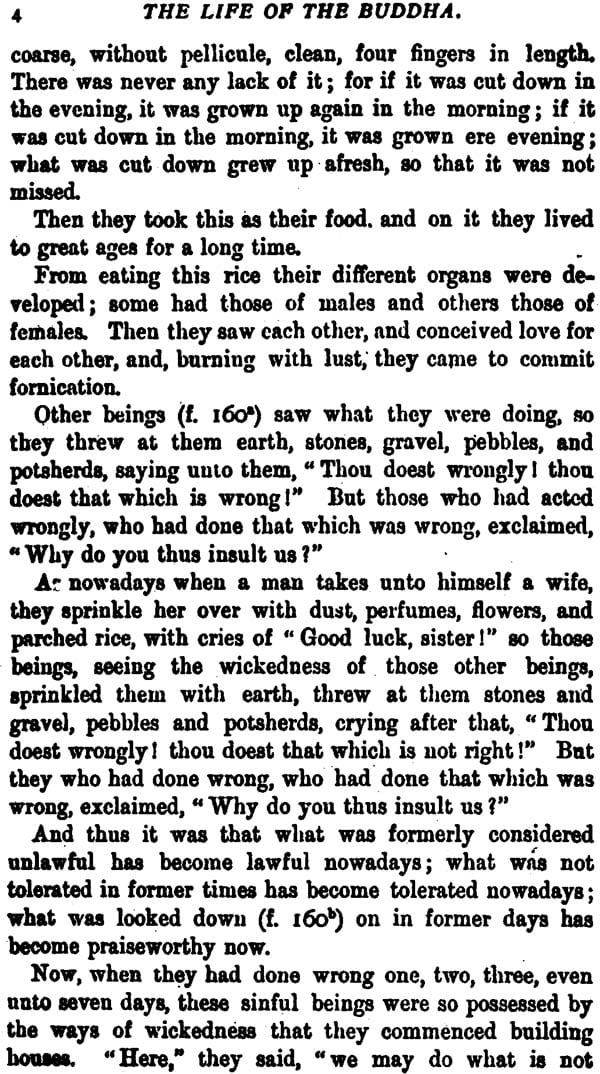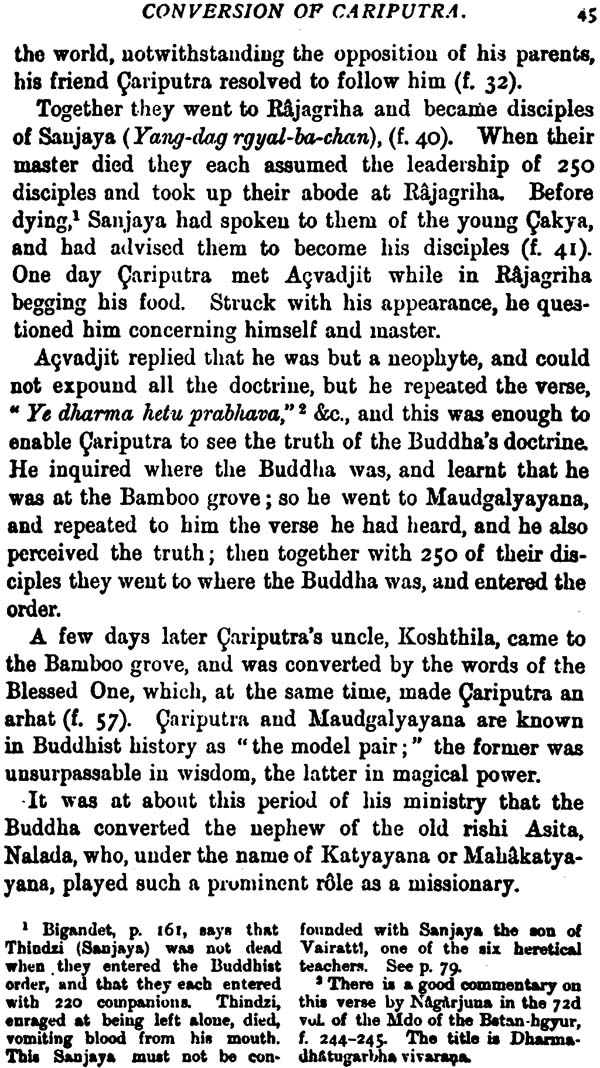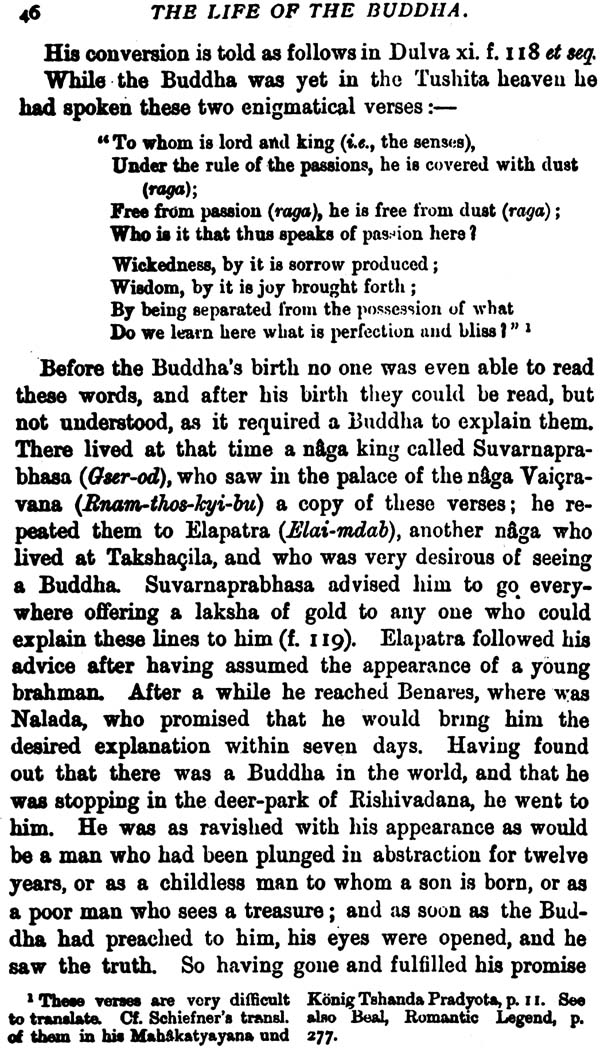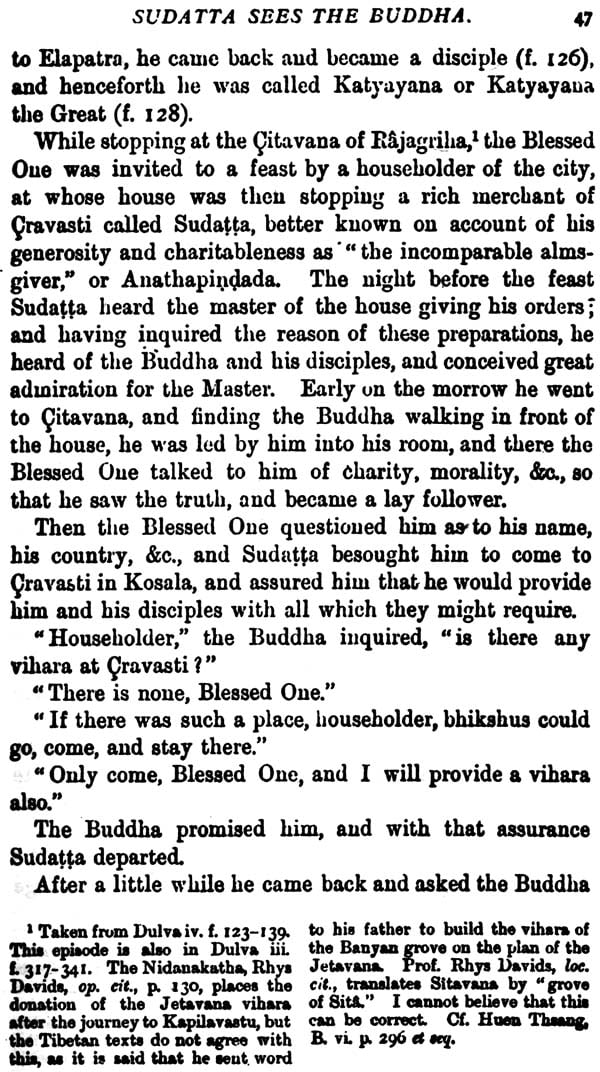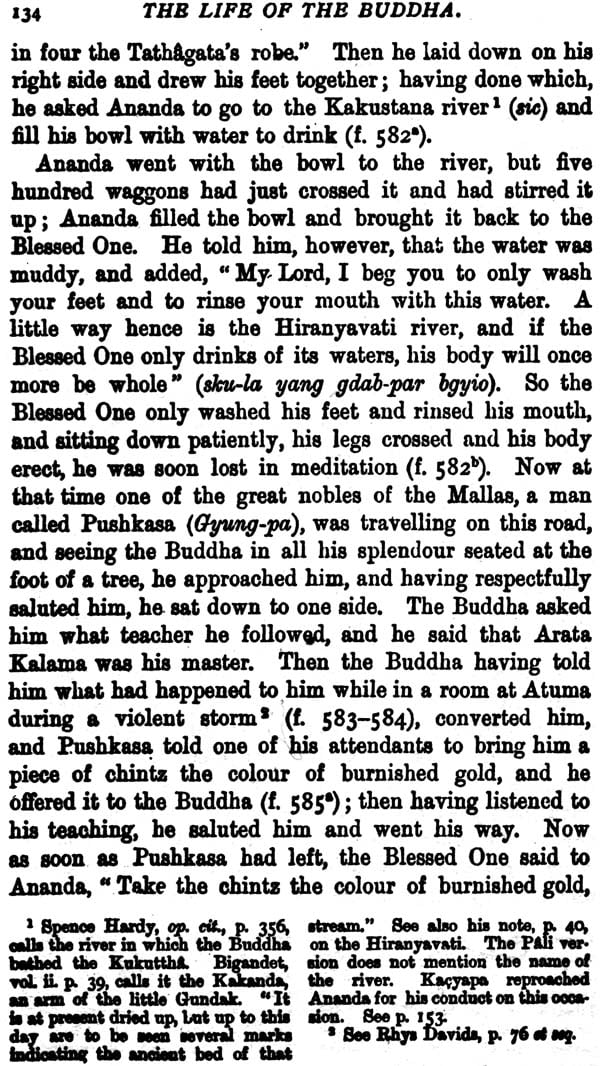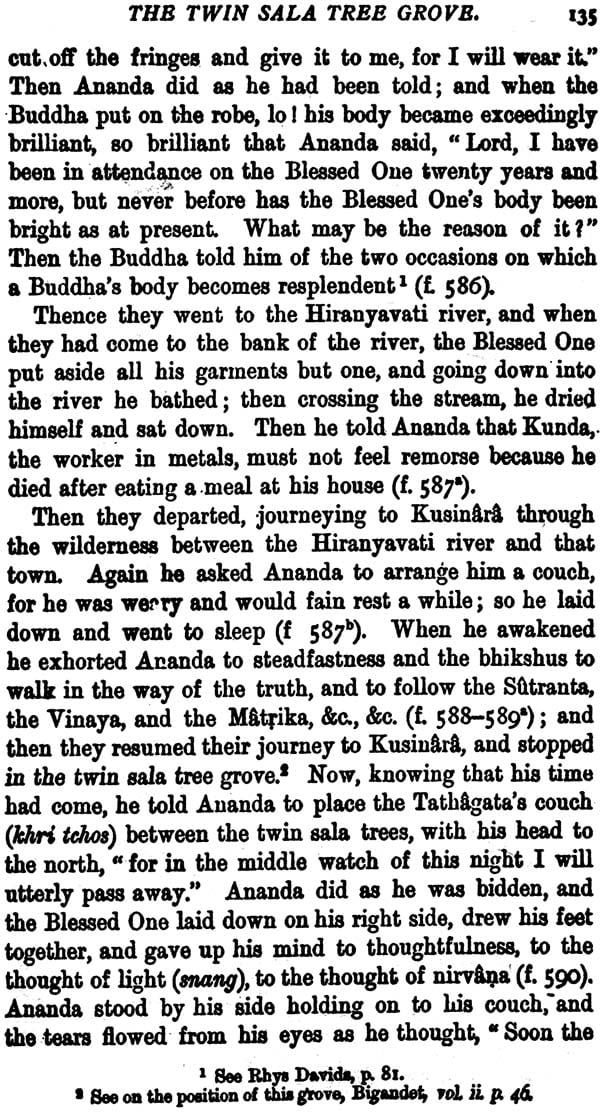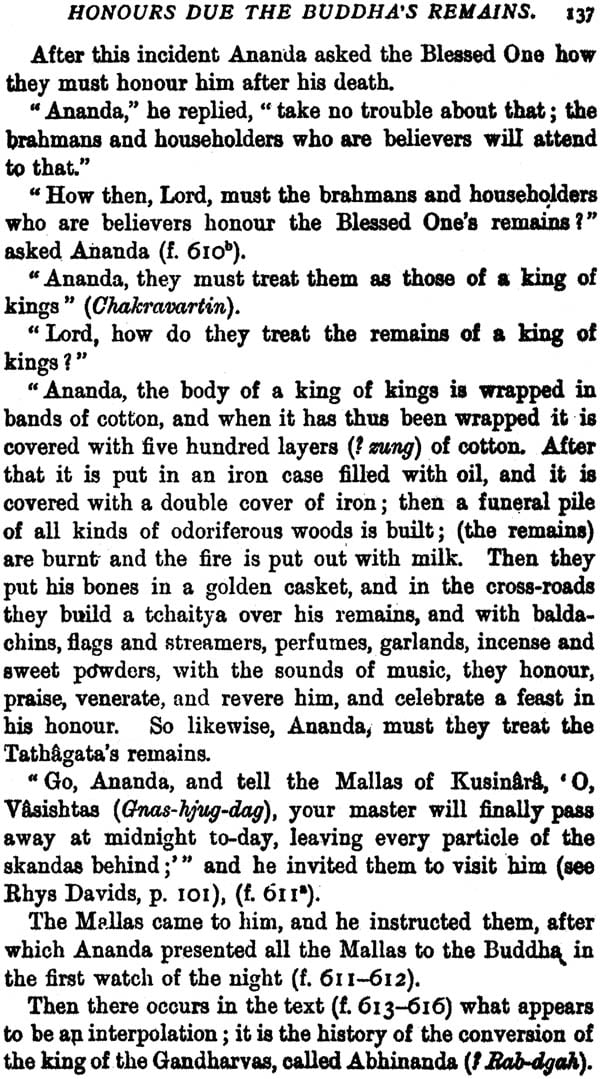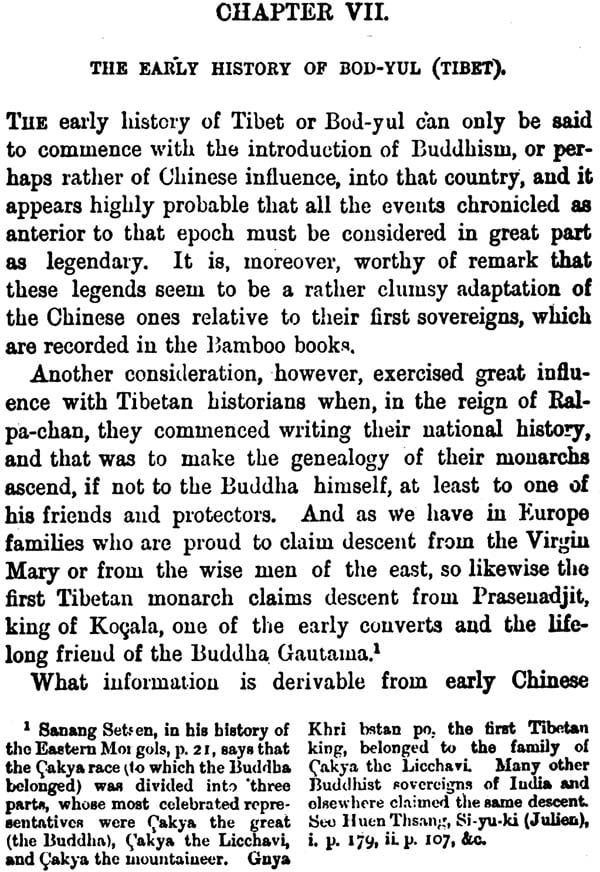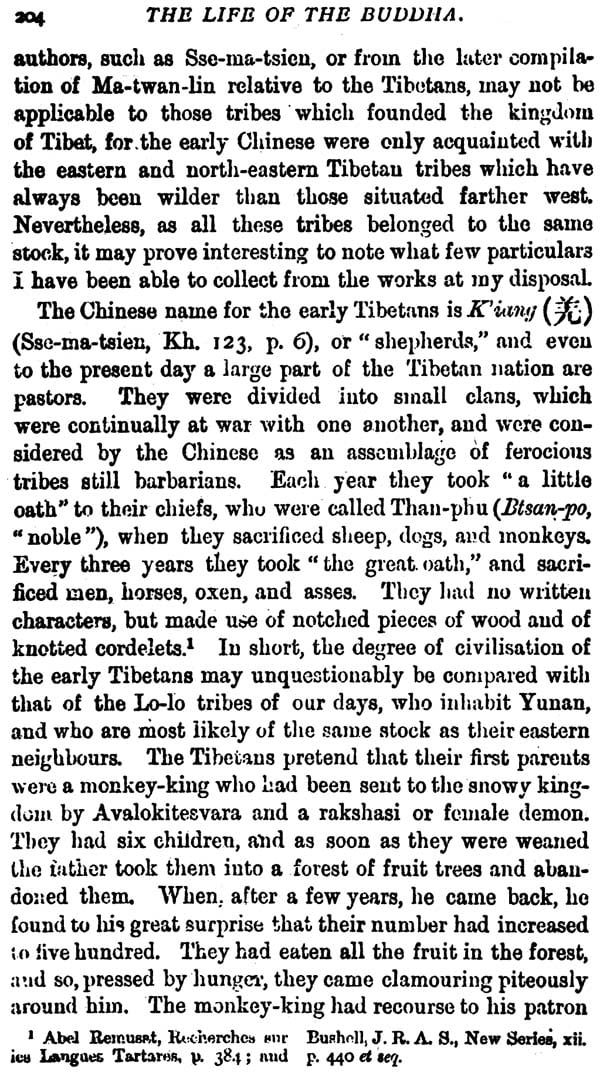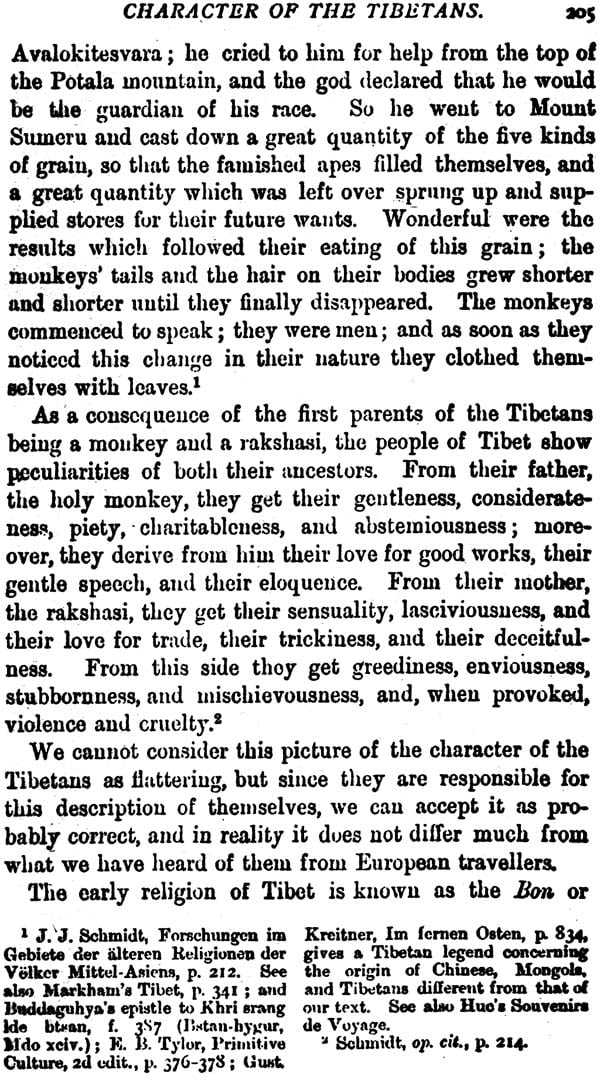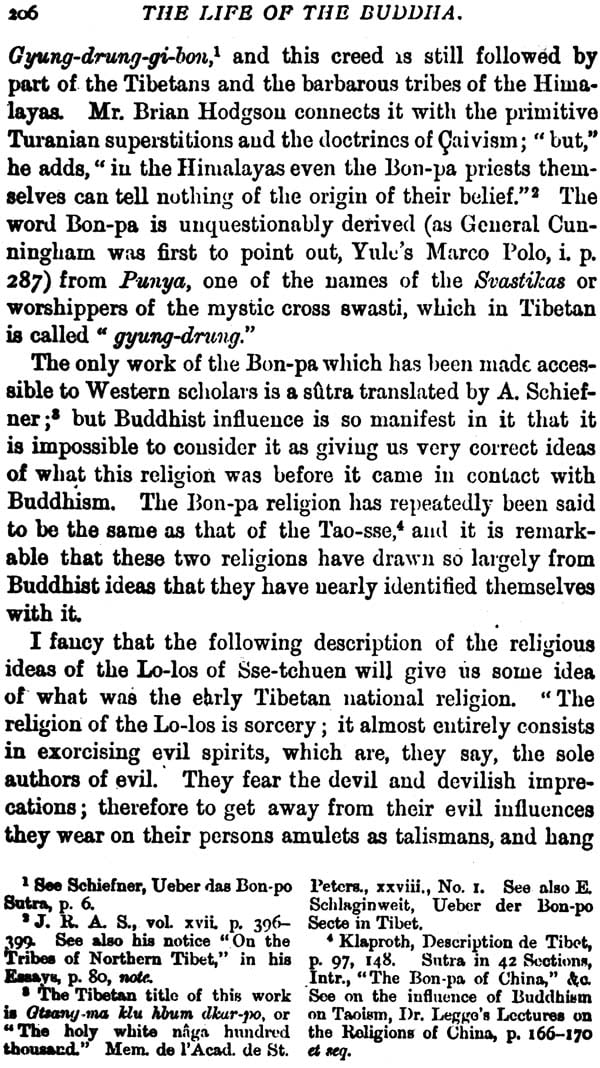
The Life of The Buddha and The Early History of His Order
Book Specification
| Item Code: | NAJ438 |
| Author: | William Woodville Rockhill |
| Publisher: | Sri Satguru Publications |
| Language: | English |
| Edition: | 2004 |
| ISBN: | 9788170307938 |
| Pages: | 282 |
| Cover: | Paperback |
| Other Details | 8.5 inch X 5.5 inch |
| Weight | 320 gm |
Book Description
The first part of the book contains a substantial and connected analysis, and frequently literal translations, of the greater part of the historical or legendry texts contained in the Tibetan Dulva or Vinayapitaka, and probably the oldest portion of the Bkah-hgyur. The Book Contains the following chapters – Ch. 1 History of the world from the times of its renovation to the reign of Cuddhodana, Father of the Buddha, Ch. 2 From the reign of Cuddhodana until the commencement of the Buddha’s ministry, Ch.3 Life of the Buddha from the commencement of his ministry until the reign of Ajatastru, Ch. 4 From the commencement of Ajatasatru’s reign to the death of the Buddha, Ch. 5. History of the Church during the hundred and ten years which followed the Buddha’s death, Ch. 6 History of the school of Buddhism, Ch. 7 The early history of Bod-Yul (Tibet), and Ch. 8 The early history of Liyul (Khotan) The book also contains appendices which deals with 1. Extracts From Bhgavati 15 On The Intercourse Between Mahavira (i.e. Nigantha Nataputta) And Gosala Mankhaliputta, By Dr. Ernst Leumann, The Doctrines of The Six Heretical Teachers, According To The Chinese Versions Of The Samana-Phala Sutra, By Bunyin Nanjio, ESQ
Any one who has glanced at the analysis of the Tibetan Bkah-hgyur hy Alexander Csoma de Koros, published in the zoth volume of the "Asiatic Researches," must have been struck with the wonderful patience and perseverance of this extraordinary scholar. Some idea of the extent of the researches which are embodied in his analysis of the Dulva, about the tenth part of the whole Bkah-bgyur, may be had when it is known that it occupies more than 4000 leaves of seven lines to the page, each line averaging twenty-two syllables. But notwithstanding all that Csoma did to make known to Europe the vast Buddhist literature of Tibet, his work is hardly more than an index of the Tibetan 'I'ripitaka. Moreover, when he wrote it, Buddhist studies were ill their infancy, and many important subjects on which the Bkah-hgyur furnishes answers, which, if not always acceptable, are still plausible and interesting, had not been investigated by scholars, and their importance was as yet ignored.
Csoma's premature death prevented him examining as fully as we could have desired the Tibetan Bstan-hgyur, in which may be found many important works which help to elucidate the difficulties which so frequently beset the canonical works in the Bkah-hgyur,
From what has been said we may safely assert that it is not impossible to extend the analysis of the Bkah-hgyur far beyond the limits reached by Csoma, So numerous. however, are the materials which are supplied us, that it is beyond the power of anyone scholar to examine them in their entirety, and he must necessarily confine himself to one special subject or branch of research.
In the first part of this work we have endeavoured to give a substantial and connected analysis, and frequently literal translations, of the greater part of the historical or legendary texts contained in the Tibetan Dulva or Vinayapitake, which is unquestionably the most trustworthy, and probably the oldest portion of the Bkah-hgyur,
By frequent reference to the pages of the original (the East India Office copy of the Bkah-hgyur), we hope we will have facilitated researches in the cumbrous Tibetan volumes, to which no indices are attached.
Some of the passages of this volume have been analysed by Auton Schiefner in his Tibetische Libensbescriebuug Cakyamuni (St. Petersburg, 1849), but as the work from which he translated them was composed by a Tibetan lama of the seventeenth century, it could hardly be considered as authoritative, and it has been thought advisable not to omit these documents in their original Tibetan form.
The Tibetan Vinaya (Dulva) is not solely devoted to recording the rules and regulations of the Buddhist order, as is the Pali work of this name, but it contains jatakas, avadanas vyakaranas, sutras, and udanas, and in that it resembles the Sanskrit Vinaya, which Burnouf tells us presents the same peculiarity. A few of these texts have been introduced in this work, because they appeared of sufficient interest to justify their presence in a volume which is intended to give an idea of the Tibetan Viuaya literature.
By comparing the following notes on the life of the Buddha with other works on the same subject, but derived from different sources, it will be seen that two periods of the life of Gautama are narrated by all Buddhist authors in about the same terms (probably because they all drew from the same source their information), the history of his life down to his visit to Kapilavastu in the early part of his ministry, and that of the last year of his life. .All the events which occurred between these two periods are with difficulty assigned to any particular year of his life, and we have been obliged to avail ourselves of any incidental remarks hi the texts for arranging our narrative ill even a semi-chronological order. Thus the oft-recurring phrase that Adjatasatru WAS king of Magn.dba when such and such an event took place, suggested the idea of taking the commencement of his reign (five or eight years before the Buddha's death) as a dividing-point in the Buddha's life, and of putting in the same chapter all the texts which arc prefaced with this remark,
The histories of the councils of Rajagriha and of Vaisali, contained in the eleventh volume of the Dulva, are here translated for the first time, and they differ in many respects from the versions of these events previously translated from' Pali or Chinese,
The authenticity of the council of Rajagriha has been doubted on insufficient grounds, and, without examining the merits of the ease, we cannot help thinking that it was much more rational that a compilation or collation of the utterances of the Master and of the rules of the order should have been made shortly after his death, than that his followers, however united they may have been, should have allowed a century to elapse before fixing in any definite shape the sacred words and ordinances. Moreover, both Pili and Tibetan works only credit the council of Vaisali with having settled some unimportant questions of discipline, and do not' mention any revision of the sacred works performed by this synod.
In the sixth- chapter will be found a literal translation of the greater part of a work on the Buddhist schools of the Hinayana by Bhavya, an Indian Buddhist of great renown. His work is especially interesting, as it differs materially from that of Vasumitra on the same subject, which has been translated by Professor Wassilief. Both of these works, unfortunately" are far from being satisfactory, and though Bhavya often appears to quote Vasumitra, he has not made use (at least in the Tibetan translation) of terms which might enable us to better understand the frequently enigmatical explanations of Vasumitra.
A few words are necessary to explain the presence in a volume of translations from the Tibetan sacred writings of a chapter on the early history of Tibet. What little information we possess of the early history of this secluded country is scattered about in a number of works not always accessible, and frequently unsatisfactory on ac- count of the defective transcription of Tibetan words. It was thought that an abstract of the greater and more reliable part of the works bearing 011 this question might prove acceptable to those who may desire to have soma knowledge on this subject, but who are unwilling to look over all the different documents which treat of it. We have endeavoured to supplement the researches of our predecessors in this field with what new facts we have been able to derive from a somewhat hurried examination of the Tibetan Bstan-hgynr and some other books which have come under our notice.
The extracts incorporated in chapter viii are quite Dew, and it is believed that no scholar has heretofore called attention to them. The texts from which they have been taken, with the exception of one, belong to a class of Buddhist works called Vyakarana or Prophecies. In them the Buddha predicts to his disciples the events which will occur in days to come in such a country or to such an individual In this case these Predictions are all corroborated by the statements of the Li-yul-lo-rgyns- pa or Annals of Li-yul, the most important of the works on this subject which I have met with.
This last-named work seems .to have been compiled from documents unknown to Northern Buddhist writers in general, and from the particular form in which certain proper names have been transcribed (such as Yd90 in- stead of Yacas or Yasheska, which is always met with in Northern texts), we think its author had access to some Southern documents on the early history of Buddhism. This supposition is still more strengthened by the fact that this work does not confound the two A90kas, as do all Northern Buddhist ones, but gives about the same date for his reign as the Dipawansa and Mahawansa. Still it is strange, if it was inspired from these PaIi documents, that it does not give exactly the same dates as they do. These extracts are interesting, moreover, in that they show with what care and precision the great Chinese traveller Hiuen Thsang recorded the traditions of 'the different countries he visited.
My most sincere thanks are due to Dr. Ernst Leumann and to Mr. Bunyiu Nanjio for the notes they have kindly furnished me, and which are reproduced in the Appendix. Dr. Leumann's translation from the Bhagavati will prove of great assistance in elucidating the very obscure passage of the Sumanu-phala Sutra relative to Gosala's theories, and Mr. Bunyiu Nanjio's parallel translations of two Chinese versions of the Samana-phala Sutra tend to prove the existence at an early date of several distinct versions of this very interesting sutra,
One of the most embarrassing parts of reading Tibetan Buddhist works is the habit of those who did these works into 'Tibetan of translating all the proper name3 which were susceptible of being translated. It is hoped that the special index of Tibetan words with their Sanskrit equivalents at the end of this volume will prove of assistance to those who may wish to study Tibetan Buddhism in the original works.
Throughout this volume no attempt has been made to criticise the texts which have been studied j they are only intended as materials for those who hereafter may under- take to write a history of the Buddha founded on the comparative study of works extant in the different eountries in which his doctrines flourished j and if our labours facilitate this, we will feel fully compensated for all our pains.
| Introduction | v | |
| Chapter I | History of The World From The Time Of Its Renovation To The Reign of Cuddhodana, Father of The Buddha | 1 |
| Chapter II | From The Reign of Cuddhodana Until The Commencement of The Buddha's Ministry | 14 |
| Chapter III | Life of The Buddha From The Commencement Of His Ministry Until The Reign of Adjatastru | 37 |
| Chapter IV | From The Comencement of Adjatasatru's Reign To The Death of Tile Buddha | 92 |
| Chapter V | History of The Church During The HUndred And Ten Years Which Hollowed The Buddha's Death | 148 |
| Chapter VI | History of The Schools of Buddhism | 181 |
| ChapterVII | The Early History of Bod-Yul (Tibet) | 203 |
| ChapterVIII | The Early History of Li-Yul (Khoten) | 230 |
| Appendix. | ||
| I. | Extracts From Bhagavati XV. On The Introdurse Between Mahavira (ie., Nigantha Nataputta) And Gosala Mankhaliputta, By Dr. Ernst Leumann | 249 |
| II. | The Coctrine of Tile Six Hertical Teachers, According To Two Chiness Versions of The Samana-Phala Sutra, By Bunyiu Nanjio, Esq. | 255 |
| General Index | 261 | |
| Index of Tibetan Words Which Occur In This Volume, With Their Sanskrit Equivalents | 270 |

